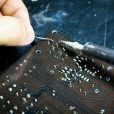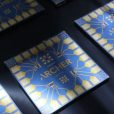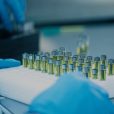Imagine being in a paralysing accident and then being able to use your limbs like before in little time. Not even movies often consider that possibility. That’s exactly what Western Australia-based regenerative medicine company Orthocell (ASX: OCC) aims to achieve with its product, Remplir, which replaces painful sutures with its soft tissue regeneration medical device.
In the US, the device’s addressable market in peripheral nerve repair stands at over $1.64 billion per year, with over 700k procedures that could benefit from Remplir. What’s more, the Company believes that it can do the job better than any other such device on the market.
The Company is undertaking a study that will compare its innovative nerve repair device, Remplir, with other similar products on the market. It wants to understand how its device works and how it can be used in nerve repair and regeneration. This study will give them information that they can use to market its product and get approval from regulators in different countries. The study will also help them figure out a reimbursement strategy.
Orthocell Managing Director, Paul Anderson, shared, “Remplir has shown, in previous studies, to be the superior product for nerve regeneration when compared to an FDA-approved comparator device.
“We are confident that the outcomes of this study will be consistent with the clinical performance of Remplir to date, and validate that Remplir is easier to use, reduces the need for sutures and results in more consistent and predictable return of muscle function.”
The study will use a rat sciatic nerve injury model. It will test how safe and effective Remplir is for repairing peripheral nerves compared to other methods. The study will involve three groups of 72 rats in total receiving different treatments: one group will only receive sutures, another group will receive Remplir, and the last group will receive a different product for comparison. The study will evaluate nerve regeneration at 4, 8, and 24 weeks after treatment to see how well Remplir works. The study will focus on how well Remplir can help the rats regain their motor and sensory functions after the injury.
This preclinical study will be conducted by Professor Bill Walsh, Director of Surgical and Orthopaedic Research Laboratories (SORL) at the Prince of Wales Hospital in Sydney and the University of New South Wales. SORL is dedicated to developing biomedical, biotechnology and engineering solutions to improve clinical outcomes in injured and diseased states. Professor Walsh’s research focuses on how materials that are put inside the body, like those used in orthopaedic, vascular, plastic, and reconstructive surgeries, interact with the body’s connective tissues. He is very knowledgeable about testing these materials before they can be approved for medical use and has helped many medical devices become successful in the market.
Anderson added, “This study is an important next step in our international market access program with the potential to provide data demonstrating the impact and advantages of using Remplir over traditional nerve repair methods. Orthocell remains committed to providing patients access to this life-changing treatment.”
A recent clinical study conducted by Orthocell showed that using Remplir to repair damaged spinal cords, brachial plexus, and upper limb nerves can restore arm and hand function to previously paralyzed limbs. After 24 months, 85% of nerve repairs using Remplir showed muscle recovery, which means that patients who suffered nerve injuries due to accidents or sports-related incidents can now regain normal use of their injured limbs. Remplir received regulatory approval in Australia in February 2022 and is now included on the Prosthesis List for reimbursement since November 2022.
Orthocell is excited about the potential of Remplir to become the top dog in the nerve repair device market, especially in the US. Surgeons are always on the lookout for devices that are easy to use and fit the job perfectly. Remplir does just that by eliminating the need for harmful sutures and providing a special environment that helps nerves regrow and patients recover faster.
The study is expected to finish in Q1 2024.
- Ovanti’s iSentric signs contracts worth $14.4m with Malaysian commercial bank - June 27, 2024
- Baby Bunting fights back from retail downturn with 5-year strategy, includes Gen-Z focus and self-funded growth - June 27, 2024
- CLEO meets with US FDA to develop strategy for ovarian cancer test launch - June 26, 2024













Leave a Comment
You must be logged in to post a comment.